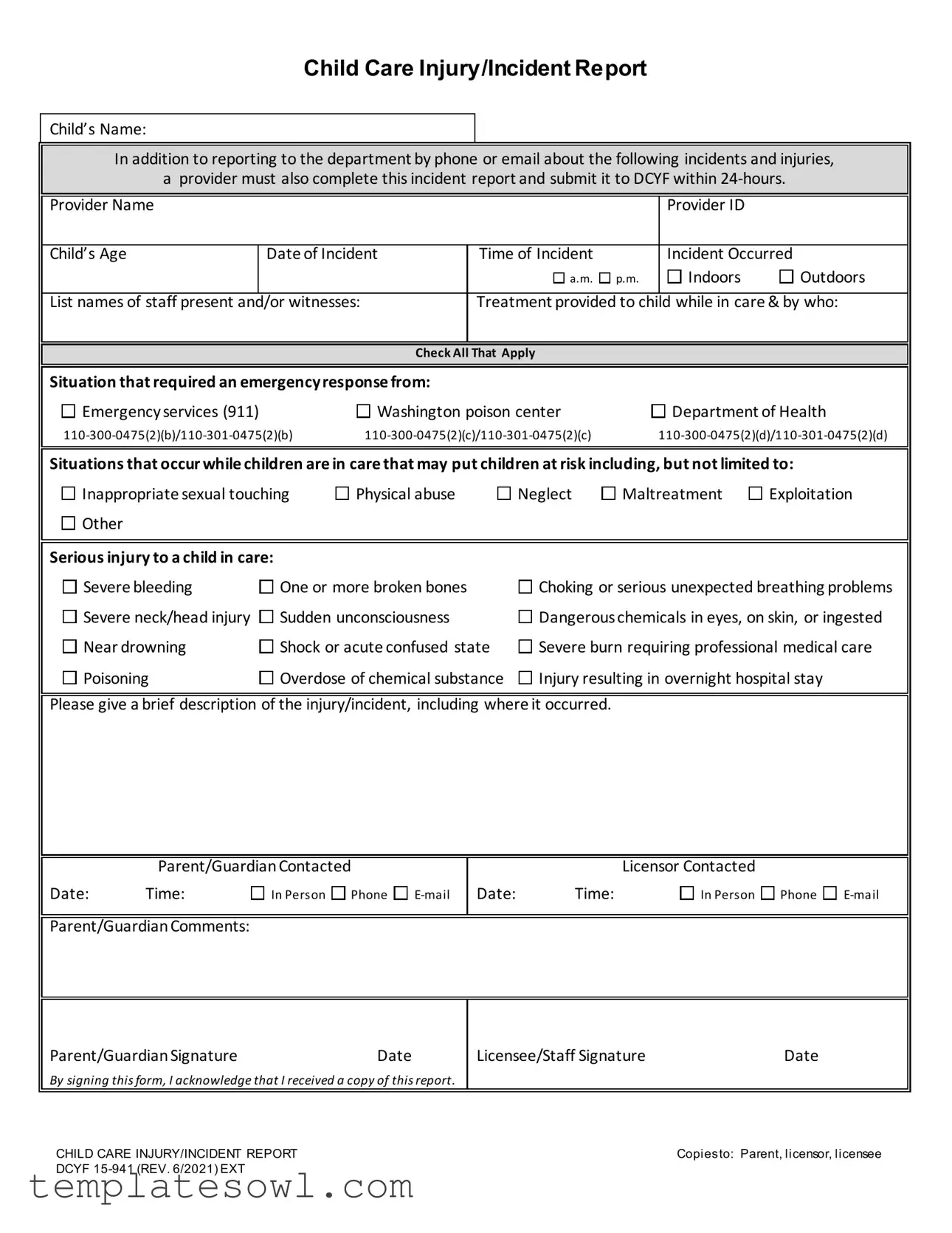What is a Child Care Incident Report?
The Child Care Incident Report is a formal document designed to record specific incidents or injuries that occur within a childcare setting. This report ensures that both caregivers and authorities are informed about notable events, allowing for appropriate actions and oversight to maintain child safety.
When do I need to submit this report?
The report must be completed and submitted to the Division of Children, Youth, and Families (DCYF) within 24 hours of the incident or injury. Timely submission helps ensure the situation is properly evaluated and addressed.
What information is required on the form?
The form requires detailed information, including the child’s name, age, the date and time of the incident, and a description of what occurred. It also asks for names of staff or witnesses present, treatment given, and should capture vital information regarding any emergency services involved.
Who is responsible for filling out the report?
What types of incidents need to be reported?
The report must include any incident that results in significant harm or injury to a child. This includes severe injuries like broken bones, choking, poisoning, or any situation that may pose a risk, such as maltreatment or inappropriate contact.
How should the incident be described?
A brief description is required, detailing the nature of the incident, where it occurred, and the circumstances surrounding it. Clarity in the description helps authorities understand the context and decide if further investigation is needed.
Do parents or guardians need to be involved in the report process?
Yes, it is essential to contact the child's parent or guardian about the incident. The report includes a section for parent/guardian comments and requires their signature to acknowledge receipt of the report.
What happens if the report is not submitted on time?
Failing to submit the report within the required timeframe can result in non-compliance with regulations, which may lead to penalties or increased scrutiny from authorities. It is crucial to prioritize timely reporting.
Is this report confidential?
While the report does contain sensitive information, it is typically shared with relevant parties, such as parents, licensing officials, and child welfare services as needed. Ensuring confidentiality when handling these documents remains important.
Where do I submit the completed report?
The completed report should be submitted to the DCYF. Specific submission methods may vary, so reviewing the guidelines provided by your childcare licensing agency is recommended for accuracy.

